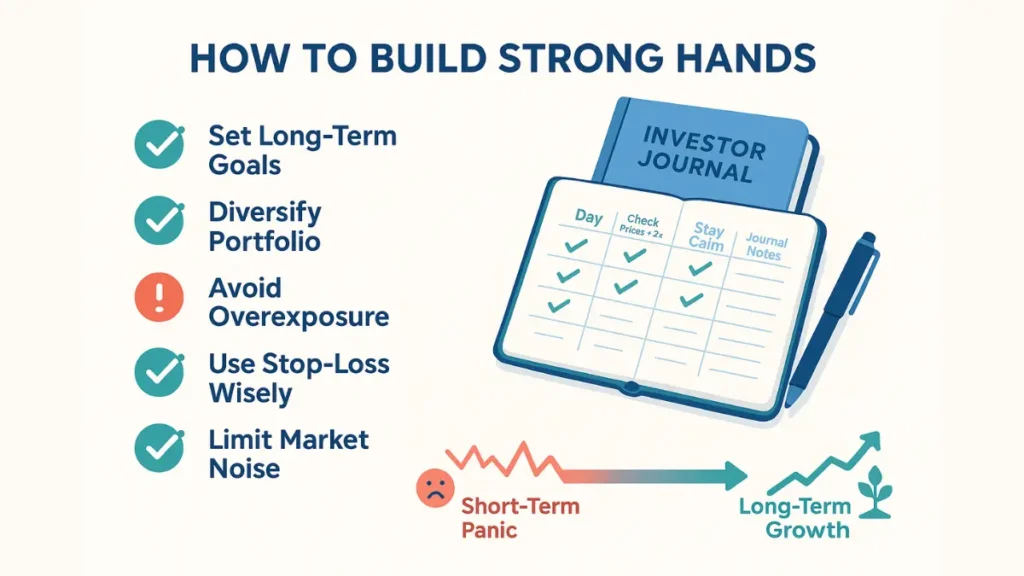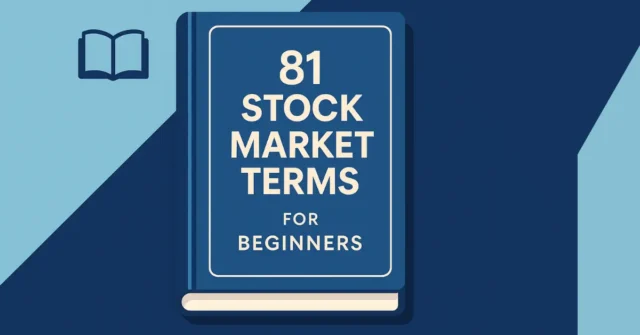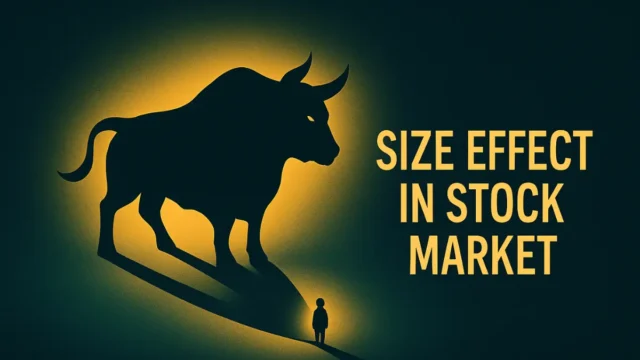Follow Us
Weak Hands vs Strong Hands in the Stock Market Explained

Imagine two investors facing the same 10% market drop. One panics, hits the sell button, and locks in a loss.
The other sips coffee, reviews their long-term plan, and does nothing. Months later, the market recovers and the calm investor is sitting on gains while the panic seller regrets acting too quickly.
This simple contrast highlights the difference between weak hands and strong hands in the stock market.
These terms describe not just investment strategies but the psychology behind them. Understanding where you fall on this spectrum and how to strengthen your approach can make the difference between building wealth and bleeding money.
Key Takeaways
- Weak hands react emotionally to price swings, often buying high & selling low.
- Strong hands stay calm, focus on fundamentals, & ride out volatility.
- Market psychology plays a huge role in shaping short-term price movements.
- Building “strong hands” requires strategy, discipline, & perspective.
Understanding Weak Hands in the Market
Weak hands refer to investors who fold under pressure. They often sell at the first sign of trouble, driven by fear rather than logic. These investors usually:
- Chase trends without conviction.
- Lack a clear strategy or time horizon.
- Overreact to short-term volatility.
For example, during the COVID-19 market crash in March 2020, countless retail investors liquidated positions at the bottom, only to watch the market roar back within months.
Weak hands create liquidity for stronger hands but often end up on the losing side.
Who Are the Strong Hands?
Strong hands are the investors who hold steady when markets get turbulent. They are not immune to fear, but they manage it with discipline. Typically, strong hands are:
- Institutions or seasoned investors with long-term capital.
- Individuals with conviction in their analysis & chosen investments.
- People who use volatility as an opportunity rather than a threat.
Think of Warren Buffett holding onto positions during the 2008 financial crisis. While weak hands dumped stocks at fire-sale prices, strong hands picked them up, betting on long-term recovery.
Market Dynamics: How Weak & Strong Hands Interact
The dance between weak hands and strong hands is what creates much of the market’s daily drama.
When weak hands sell in panic, they add downward pressure on prices. Strong hands, often with deeper conviction and more liquidity, are the ones buying at those moments.
This interaction can be seen in almost every market correction. For example, in “flash crash” events, algorithms and weak-hand traders often trigger a cascade of selling. Stronger hands; hedge funds, long-term investors, or disciplined individuals step in to scoop up bargains.
In essence:
- Weak hands fuel short-term volatility.
- Strong hands provide market stability by absorbing that selling.
- The transfer of assets from weak to strong hands often marks a turning point in market sentiment.
The Psychology Behind Weak vs Strong Hands
At the core, this is not about how much money an investor has, it’s about psychology.
Weak hands are often driven by:
- Fear of loss.
- Herd mentality (everyone else is selling, so I should too).
- Overexposure or leverage, which magnifies risk.
Strong hands, on the other hand, rely on:
- A long-term strategy grounded in research.
- Emotional discipline & patience.
- The ability to zoom out and see beyond short-term noise.
Building Strong Hands as an Investor

The good news? Strong hands aren’t born, they’re built. With the right strategies & mindset, anyone can strengthen their approach to the market.
Practical strategies to develop strong hands:
- Set long-term goals: Know why you are investing and what time horizon you are working with. A clear purpose makes it easier to endure volatility.
- Diversify properly: Spread risk across sectors, asset classes, and geographies so no single dip can sink your portfolio.
- Avoid overexposure: Don’t put too much capital into a single stock or trade. Smaller positions = less emotional stress.
- Use stop-loss wisely: Not to panic-sell, but to protect yourself from catastrophic losses.
- Limit noise: Checking prices 10 times a day only fuels weak-hand behavior. Strong hands trust their research.
Mindset shifts:
- Think like an owner, not a trader.
- Expect volatility instead of fearing it.
- Remember: time in the market beats timing the market.
By adopting these habits, you will naturally move from reacting emotionally to acting strategically.
Conclusion
The difference between weak and strong hands is not about wealth; it’s about mindset. Weak hands let fear dictate decisions. Strong hands stick to strategy, stay calm, and let time do the heavy lifting.
Do next:
- Review your portfolio & check if your holdings align with your long-term goals.
- Identify one weak-hand habit you want to break (like checking prices too often).
- Start tracking progress with a simple investing journal.
Final thought: In the stock market, strong hands don’t avoid storms; they weather them, and that’s how they win.
Disclaimer:
This content is for informational purposes only and should not be considered financial advice.
Read full Disclaimer.




